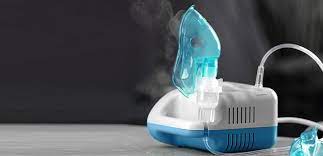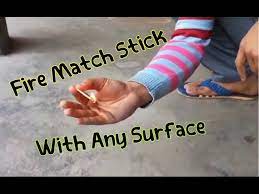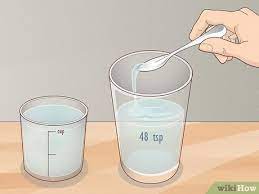Nebulizers may require kids to sit still for 5 or 15 minutes while they breathe in the medicine. To keep kids calm, try to incorporate treatment time into a daily routine and make it fun by reading stories or singing songs
Steam Inhalation
Steam inhalation is a traditional home remedy for colds, sinus infections and allergies. It is thought to ease symptoms by loosening mucus, opening nasal passages, and soothing irritated tissues (larynx). It is also believed that heat kills viruses. However, there is little scientific evidence to support these claims.
Using a steam inhaler is easy, but you will need to disinfect it regularly. You can do this by rinsing the medicine cup and mouthpiece with warm water and allowing them to air dry. Then you can use it again with fresh water and medicines. You should also clean and disinfect the tubing that connects your nebulizer to the compressor.
A nebulizer is a small machine that changes liquid medicine into fine droplets that can be inhaled. It has a mouthpiece or face mask to direct the medicine into the lungs, and it is powered by an air compressor that plugs into an electrical outlet. There are different kinds of nebulizers, including jet, mesh, and ultrasonic. The type you choose depends on the kind of medicine and how much it is prescribed.
Saline Solution Inhalation
Saline solution inhalation is one of the most common treatments for mucus build-up in the lungs. You use this medication with a special machine called a nebulizer that changes the liquid medication into a fine mist you can inhale. Your doctor or respiratory therapist can give you instructions for using this medication and the nebulizer.
You can also add saline to other medications that are inhaled with nebulizers, such as antibiotics. This helps the medication enter the lungs better. You should not mix saline with cough syrup or gargle solutions, as these can block the nebulizer’s nozzles. You should also avoid essential oils, which may trigger bronchial distress in people with asthma or chronic obstructive pulmonary disease.
Inhaling saline can help children with the symptoms of bronchiolitis, a serious lower respiratory tract infection in infants. It occurs when the small structures (bronchioles) leading to the lungs become infected, causing inflammation, swelling, and production of mucus. It is most often caused by a viral infection. Inhaling hypertonic saline can reduce these symptoms and liquify the mucus, making it easier to cough up.
It is important to clean and disinfect your nebulizer regularly. Your doctor or respiratory therapist can teach you how to clean and disinfect your equipment, and they will provide you with a specific cleaning regimen. It is also important to not share nebulizer parts with other people, as they can easily get contaminated by bacteria.
Essential Oil Inhalation
Using an essential oil inhaler can help with a number of respiratory ailments. Inhalation is an effective way to deliver the oils to the lungs and can ease symptoms of bronchitis, sinusitis, congestion, coughing and sore throats. Many oils have a variety of other health benefits as well, including emotional wellness.
Essential oil inhalation can be done through a diffuser, humidifier or nebulizer. A nebulizing diffuser is the best option for inhalation because it does not change the chemistry of the oil and dispenses a mist that remains airborne. It also ionizes the oil for maximum therapeutic benefit.
An ultrasonic humidifier can be used as a temporary nebulizer at home. A sterile saline solution or prescribed medication can be added to the humidifier, which then creates a fine mist that can be inhaled for breathing relief. It is important to clean the humidifier thoroughly after each use to prevent bacteria growth and ensure proper function.
Herbal steam inhalation is another technique for at-home nebulization without a nebulizer. Adding herbs with medicinal properties like chamomile, thyme and eucalyptus to hot water and then inhaling the steam can provide soothing relief for respiratory discomfort. Keeping hydrated by drinking plenty of fluids throughout the day can also help thin mucus secretions and keep airways open.
Aromatherapy
A nebulizer delivers medication directly to the lungs via a mist that is produced by the air compressor. Nebulizers are used to treat breathing conditions such as COPD and asthma. They are available through prescriptions from a doctor and come with a medicine cup, mouthpiece or mask, air compressor, air filter and tubing.
Nebulizers are easy to use and work with your natural breathing to deliver the medicine quickly. However, they can take a while to produce the mist and may require cleaning and disinfection between uses. They are also more expensive than inhalers.
For the home, aromatherapy is a popular alternative to nebulizers and can be done by using a diffuser or applying essential oils to the skin or inhaled through a mask. It is important to note that essential oils are lipophilic and dissolve in fats, making them able to penetrate cell membranes and deliver their therapeutic properties to the body.
The nebulizer consists of a jet or ultrasonic compressor, a plastic medicine cup and some kind of inhalation attachment (mucus trap, nasal, mouthpiece). It is important to clean the nebulizer equipment before each treatment and before storing it. Follow your physician’s instructions for how often to wash and disinfect the device. It is also recommended that you keep an extra medicine cup and air compressor filter in case one gets dirty or damaged.





